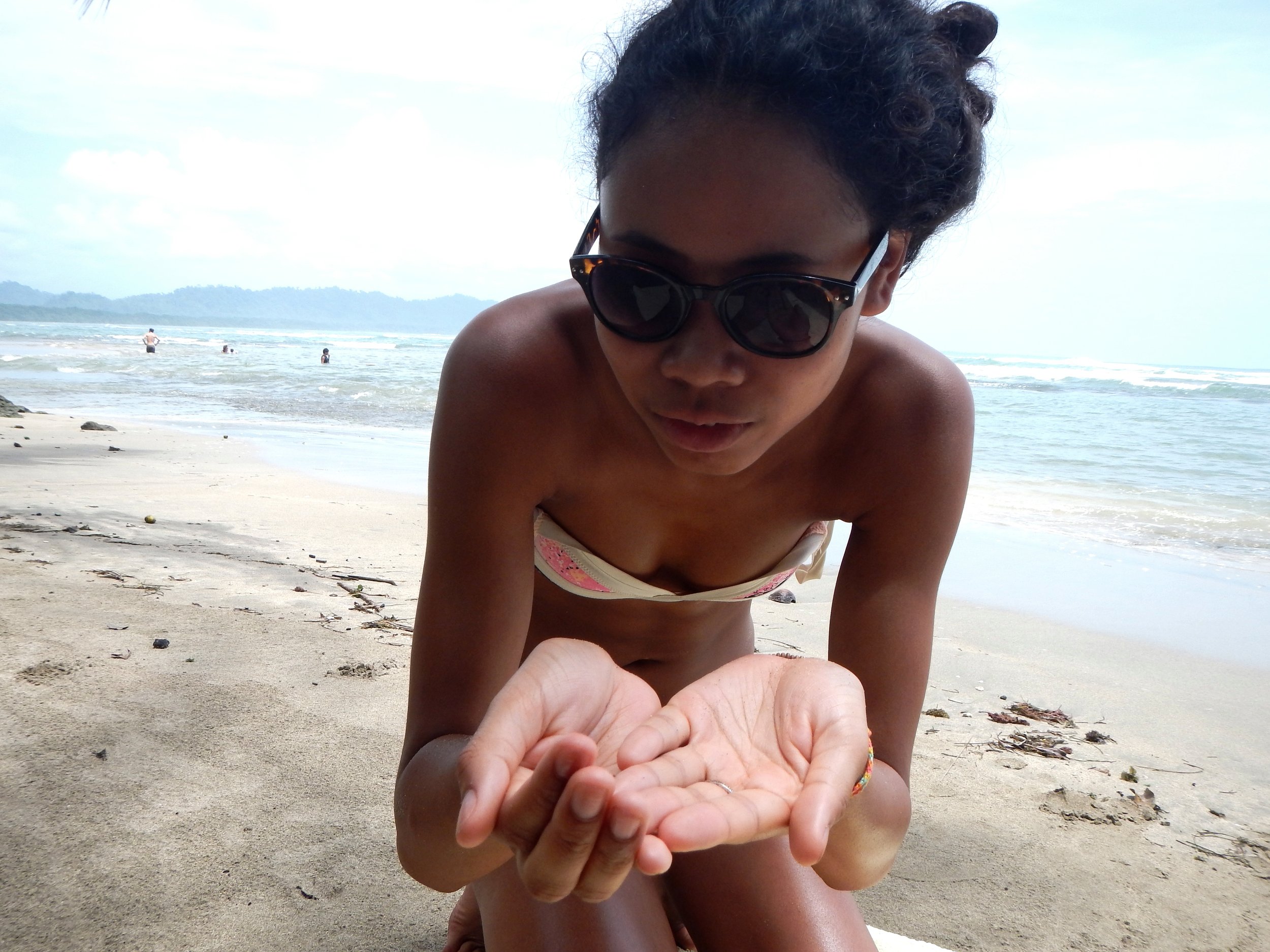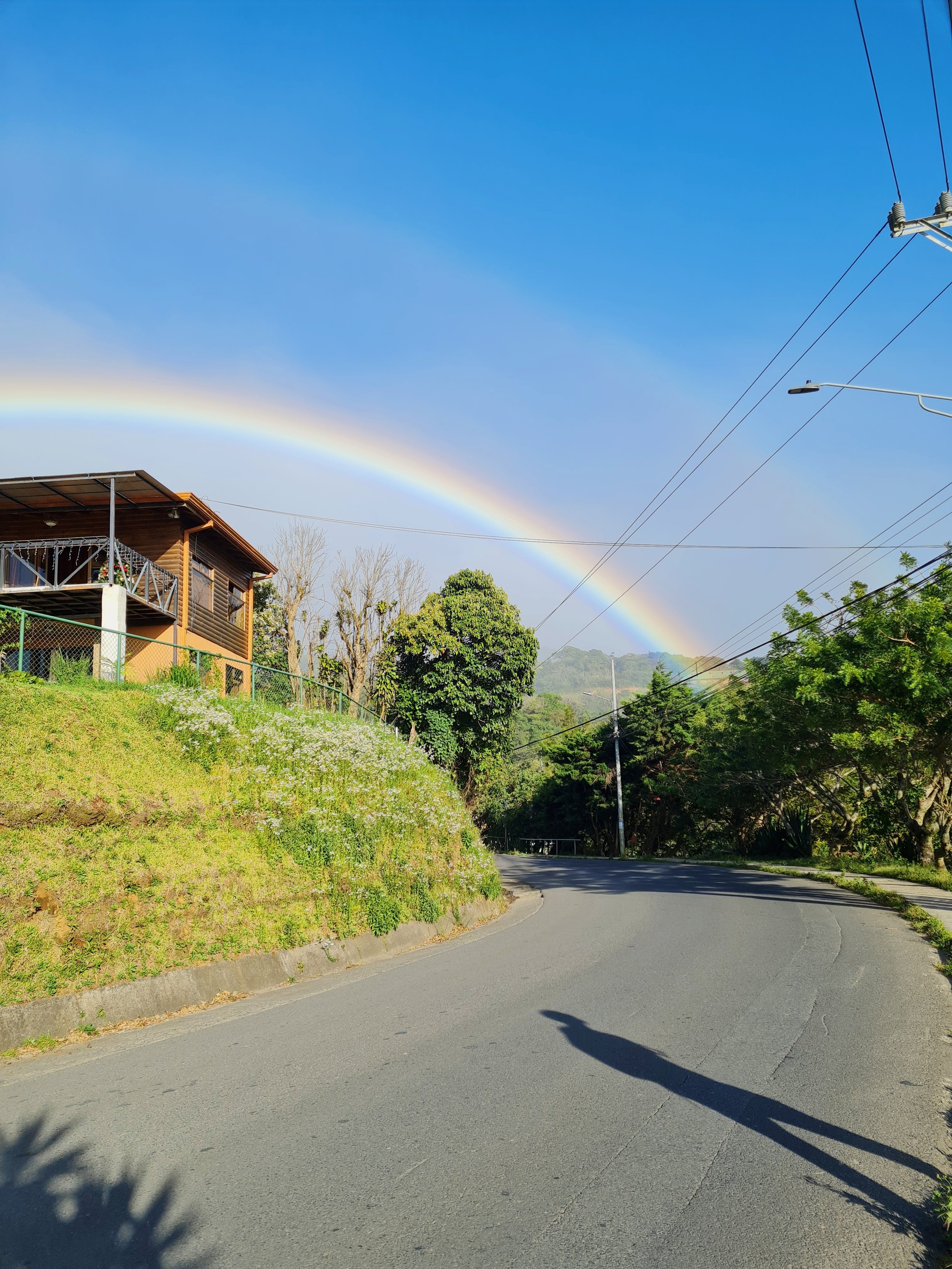Costa Rica
A popular Central American destination, rich in wildlife, wellness, and waves.
I don’t really have an itinerary for Costa Rica as I have visited this country a couple of times but not really to travel around. The first time I came to Costa Rica was to volunteer with turtles along the Caribbean coast, which also involved a couple of short trips to other destinations. The other time I visited was to attend Yoga Teacher Training along the west coast. Each time I visited, I used San Jose as the main transport hub between each destination. So instead of an itinerary, I have listed popular destinations within the country below, including some of the areas I have visited.
Things to do, and where to go
San Jose: The capital city. You’ll likely want to make a bee-line out of San Jose to other destinations across Costa Rica. Still, I’d recommend spending a couple of days here getting a feel of the city and experiencing what it has to offer, particularly in terms of culture and history. San Jose also has excellent public transport links to other areas of the country so it is likely that you will stop through here a couple of times if you are travelling.
Monteverde & Arenal: Just north of San Jose head up into the mountains and forests to swap the city for nature. Hike Arenal Volcano, explore the Monteverde Cloud Forests, and bathe in the hot springs around La Fortuna. Plenty of adventure activities are available here from rappelling waterfalls to ziplines and water rafting. There are also opportunities to enjoy a more relaxing experience, soaking in nature with eco-lodges and wellness resorts.
Nicoya peninsula: This area is known for its beautiful and picturesque beaches, and good surf. Try Tamarindo if you’re looking for a fun time day and night. For a more chilled-out experience, Montezuma has some nice resorts, or you can try smaller beach towns like Samara and Manzanillo. In terms of surf you have Playas Avellanas and Negra in the north, Playa Nosara in the middle, and Playa Santa Teresa and Malpais in the south.
Pacific Coast (Jaco, Quepos, Uvita): More beautiful beaches to relax and surf, including the white-sand beach and lush green forest of Manuel Antonio National Park based near Quepos. Jaco is another popular destination for surfing, and it is a largely Westernised town built for lively day and nightlife. Spend your time travelling up and down this coast, enjoying the sea, sun and sand, from larger cities like Jaco to smaller beach towns like Pavones.
Osa Peninsula: Some of the most pristine nature in Costa Rica not often busy with tourists. Visit and trek some amazing nature reserves like Corcovado National Park, Reserva Indigena Guaymi and Isla de Caño. The surrounding water also is rich in biodiversity and great for spotting dolphins, kayaking through mangroves, and snorkelling.
Caribbean Coast (Limon, Tortuguero, Puerto Viejo): The north section of the coast can only be accessed by boat as you have to manoeuvre through sea and swamps to make it little ‘island’ villages. This has left much of the area untouched by development, which is great for the wildlife in the area. Most well-known as an area for turtle nesting, many come to visit Parque Nacional Tortuguero, or volunteer at a turtle sanctuary like I did here. Further south, experience Caribbean village life in Cahuita and Puerto Viejo. Think laid-back attitudes, calypso music, Afro-Caribbean culture, and rich aromas rising out of kitchens. Puerto Viejo is popular for surfers and travellers looking for a fun time in a small town. For a quieter experience, head to Manzanillo.
How to travel around Costa Rica
Public buses will be able to get you around most of Costa Rica, many of which depart/arrive/pass through San Jose. Buses are easy to navigate, there is plenty of information online to find routes, bus stations, and buy tickets online. It is always possible to buy your ticket on the day, but if you are working to a tight schedule I’d recommend buying in advance to ensure you have a seat. Long bus rides will make rest stops for food and toilet breaks, some coaches will have toilets on board. In general, all the buses I travelled on were comfortable, air-conditioned, and tinted glass.
I’ve listed some of the main bus companies below, and their stations are also marked on the map above.
MEPE: San Jose - Puerto Viejo (Limon, Cahuita, Sixaola)
Transmonteverde: San Jose - Santa Elena (Monteverde, Puntarenas)
Empresa Alfaro: San Jose - Guanacaste province (Nicoya, Samara, Nosara, Tamarindo)
Grupo Blanco: San Jose - Puerto Jimenez
Transportes Cobano: San Jose - Cobano (Montezuma, Tambor)
Tracopa: San Jose - Quepos (Jaco, Manueal Antonio, Panama)
Transportes Jaco: San Jose - Jaco (from here you can take local buses up and down the coast)
Transportes San Carlos: San Jose - La Fortuna (Arenal. No website, buses leave regularly from Terminal 7-10 in San Jose)
Gran Terminal del Caribe in San Jose (Grupo Caribeños and Tracasa): San Jose - Limon (Tortuguero via La Pavona and Cariari).
Uber is present in Costa Rica and is an easy way to get around cities at a reasonable price. You can also take taxis, which should run on the meter, otherwise make sure to agree a price before setting off. Sometimes, booking shuttles can be more convenient, particularly if you have to be somewhere in unsociable hours, or need to cut down travel time. Shuttles are significantly more expensive than public buses and I really try to use them when I can’t work out public transport myself.
Everything else
Money: Compared to other countries in Central America, Costa Rica is expensive, and you notice it. Make sure to bear that in mind when planning your trip, especially if you are travelling between countries, as you will need a bigger budget here. For example, a 15 min Uber trip in Panama City costs $3.50, in Guatemala City it costs $3.20, and in Jaco, Costa Rica it costs $5.40. Services and infrastructure are more developed in Costa Rica, which is good, but you pay for it. For example, in Panama, to hike a trail in Boquete (a popular mountain forest destination), you may pay a small entrance fee ($5) to the trail if the trailhead is being manned. In Costa Rica, a trail in Monteverde (a popular mountain forest destination) would likely be within the grounds of a park or reservation, would therefore be well maintained with maps and guides available, and as such would cost $15-30 to access.
The currency in Costa Rica is colón, however, USD is readily accepted and used across the country. Dollars are good to have on hand, especially if you are travelling between countries in Central America, as they are accepted in other countries too. However, I would always suggest using local currency when you can, or at least calculating the exchange difference if prices are given in USD, as it’s not uncommon to upcharge tourists. In more rural areas, having local currency may be a necessity.
Language: The official language is Spanish, but most people are able to speak English. This may not be the case in more rural areas.
Safety: Most tourist areas are safe and relatively busy day or night. For me, it was the more quiet and rundown areas of the country that seemed unsafe. This was definitely the case in San Jose where there are quite a few homeless people or beggars. I wouldn’t recommend walking alone at night in areas that you are unfamiliar with in San Jose. Ask your accommodation about the local area you are in and they should be able to give you advice. I have also heard of higher crime rates in areas like Limon, although didn’t see or experience that myself. These are petty crime rates as opposed to violent crimes, so keep your valuables close and if in doubt use an Uber or pre-booked transport to get around at night or in unfamiliar places.
Food: Among all the Central American countries, Costa Rica is unfortunately known for having the blandest food – and to be honest, that did ring true. Nevertheless, you might as well give these dishes a try!
Gallo pinto (rice and beans)
Casado (a made-up meal plate. This will be a dish of rice, beans, salad, tortilla, plantain, and meat)
Tamales
Arroz con leche
Sopa negra (black bean soup)
Chifrijo (a mix of chicharrones (pork rinds) and frijoles (beans)
Patacones (Twice fried plantains)
Fresh coconut
Street mango (mango with lime chilli salt)
Need to knows
Compared to other Central American countries, Costa Rica is considered to be more expensive, particularly for booking public transport and tours/activities. Budget accordingly.
Special Recommendations
Food: Patacones
Attractions: Pacific coast beaches
Accommodation: Selina, San Jose
R’s take
If you love nature then you’ll love Costa Rica. Generally felt safe as a solo traveller, and experienced no issues with being a woman of colour.

Playa Jaco




Playa Jaco

Playa Jaci





Puerto VIejo




Rescue sloth at Jaguar Rescue Centre

Rescue sloth at Jaguar Rescue Centre

Puerto Viejo




